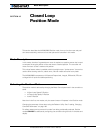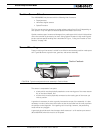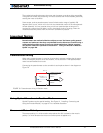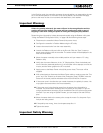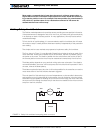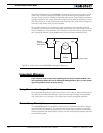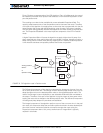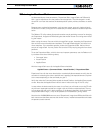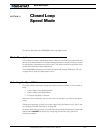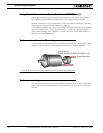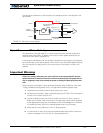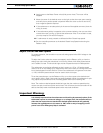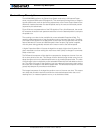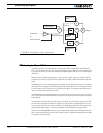
Closed Loop Position Mode
122 AX2500/2850 Motor Controller User’s Manual Version 1.7. February 1, 2005
PID tuning in Position Mode
As discussed above, three parameters - Proportional Gain, Integral Gain and Differential
Gain - can be adjusted to tune the position control algorithm. The ultimate goal in a well
tuned PID is a motor that reaches the desired position quickly without overshoot or oscilla-
tion.
Because many mechanical parameters, such as motor power, gear ratio, load and inertia
are difficult to model, tuning the PID is essentially a manual process that takes experimen-
tation.
The Roborun PC utility makes this experimentation easy by providing a screen for changing
the Proportional, Integral and Differential gains and another screen for running and monitor-
ing the motors.
When tuning the motor, first start with the Integral Gain at zero, increasing the Proportional
Gain until the motor overshoots and oscillates. Then add Differential gain until there is no
more overshoot. If the overshoot persists, reduce the Proportional Gain. Add a minimal
amount of Integral Gain. You may further fine tune the PID by varying the gains from these
positions.
To set the Proportional Gain, which is the most important parameter, use the Roborun util-
ity to observe the three following values;
• Command Value
• Actual Position
• Applied Power
With the Integral Gain set to 0, the Applied Power should be:
Applied Power = (Command Value - Actual Position) * Proportional Gain
Experiment first with the motor electrically or mechanically disconnected an verify that the
controller is measuring the correct position and is applying the expected amount of power
to the motor depending on the command you give it.
Verify that when the Command Value equals the Actual Position, the Applied Power equals
to zero. Note that the Applied Power value is shown without the sign in the PC utility.
In case where the load moved by the motor is not fixed, you will need to tune the PD with
the minimum expected load and tune it again with the maximum expected load. Then try
to find values that will work in both conditions. If the disparity between minimal and maxi-
mal possible loads is large, it may not be possible to find satisfactory tuning values.
Note that the AX2500/2850 uses one set of Proportional, Integral and Differential Gains for
both motors and therefore assumes that similar motors, mechanical assemblies and loads
are present at each channel.




